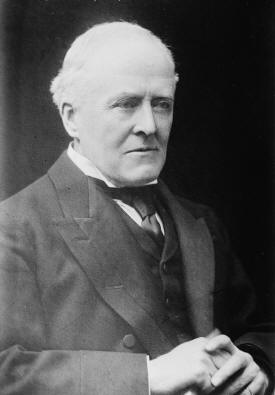A History of Frieth |
1860 - 1900 | ||
|
Preface |
In 1868 Canon Ridley bought a piece of land opposite Frieth School and had the Parsonage built on part of it; the other piece he re-sold to
Mr. West and Mr. Tom Collier, on it they built "The Firm" (see
West & Collier) This village industry was,comparatively a big employer of labour. The factory finally closed in 1940. The firm made a variety of furniture but chiefly chairs, some rush-seated, and church furnishings - these were sent all over the world. The growth of the furniture industry in the High
Wycombe area generally is well described in Mr. Maye's books and these, together with a visit to the High
Wycombe Museum on Castle Hill, a visit to Lord Dashwood's exhibition and a glance at the interesting photos and exhibits in the Bodgers Bar of the Falcon Hotel will give a good idea
of it during these years. [ Sadly the Bodgers Bar is long gone,
swept away with most of the internal structure and character of
the old hotel in High Wycombe ]
The second half of the 19th century saw Frieth influenced by at least five factors, these were: 1. Frieth was now a village with a church, a school, a resident curate and a school master (see history of church and school). 2. First Canon Ridley and then succeeding Rectors of Hambleden had a great influence on spiritual life, education and welfare generally. 3. The Firm was established, employing labour and housing its workers. 4. The Lord of the Manor (now the Scott-Murray family) took more interest in the farms, tenant farmers and labourers under his control. 5. The Cripps family were living at Parmoor House employing labour, housing their workers and helping in welfare generally. (see Lord Parmoor's account).
 The Village Institute pictured in 1969 By 1880 the number of houses in Frieth had grown considerably, there were many more on the hill, some owned by West and Collier and each of the communities listed in the last chapter had grown but Great Frieth more than the others. Many villagers lived in tied cottages. Conditions in the cottages had improved, most of them now had access to a water tank, they had vegetable gardens and most of them had kitchen ranges on which to cook. There was no need now to bake bread at home for there was a baker in the village, the baker would also cook the roast on Sunday or dough cake, for a small fee. Houses were lit by lamps to supplement candles. Food was somewhat better, there was still no butcher in the village but meat could be bought from Marlow or Henley after a shopping expedition by carriers cart or horse and trap and meat was sold locally as a beast was killed. The village now boasted a village shop and those with the means could buy bread, flour, tea, sugar, candles, soap and many other things. Shoes were still made in the village by the cordwainer. Most men still worked on the land, the rest at the Firm and some at brickmaking. The women made lace but now the children went to school, albeit some were unwilling scholars! Disease struck now and again, mostly diphtheria and scarlet fever amongst the children. Life was still hard and wages small but there was room for some relaxation. As well as the yearly treats already mentioned the village had a Reading Room and a Night School, a cricket club and a Drum and Fife Band. (Mr. E. Collier owns a fife and the big Drum is still at the Village Hall). To add to the yearly festivities "Ayres Fair" was held every Whit Monday on the Common by the Prince Albert (Mr. Ayres was the Landlord). The villagers had stalls and there was visiting entertainment, a Merry-go-Round and swing boats. Mrs. Bond who had a shop in her house (now Hilliers) selling home made cakes, made a Fair 'speciality' - cold rice pudding cut out in ld. pieces! There were three ale houses in the village itself, the Yew Tree, the Prince Albert and the Royal Oak (Barlows) as well as The Pheasant beyond Parmoor and the Brickmakers (called "The Kiln") on Moor Common. Most men had their own particular song and bar games were popular besides the usual ones. "Pitch in the hole" was played at the Prince Albert. There was some heavy drinking as was common all over England at that time. However I am told this never assumed the proportions in Frieth that it did in Lane End and High Wycombe, where it was common practice to pay the men in a public house on Friday night where they would stay till they had drunk their pay away, returning each day and not resuming work till Tuesday morning. Probably the difference was that Frieth was much more of a "Feudal" village and under the influence of Parmoor House and the Church who in fact constituted the "Welfare Services" as well! Certainly people had found Frieth a good place to live in for they came, they stayed, they intermarried - everybody knew everybody else. There was a solid Victorian base of religion and family life, the villagers were law abiding and honest and though still poor by our standard were much better off than many other people in other parts of the country at that time. (See Mrs. Sarah Brown's account). |

